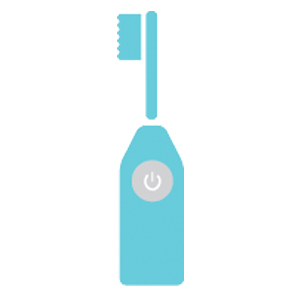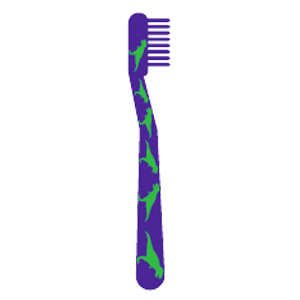So you’ve made your way into the oral care aisle at your favorite store when you’re bombarded with what seems like millions of choices in toothbrushes. Which is the right brush for you? How about for your kids? Some ideas to keep in mind when selecting your next brush:
Manual Toothbrushes

- Always look for toothbrushes with soft bristles. Hard- and medium-bristled toothbrushes are too abrasive to the gum tissue
- Consider the size of brush head (compact vs. full). If your mouth is small, or if you have a hard time reaching the back teeth, opt for a compact brush head. Some adults even use children’s toothbrushes that fit their mouths better. (SIDE NOTE: To better reach the cheek sides of your upper molars, close down a bit while brushing; your chewing muscles will relax and allow your brush better access to that side of your teeth.)
- Something to consider: Technique is very important when using a manual toothbrush – learn the proper way to brush to ensure complete plaque removal
Electric Toothbrushes

- There are many electric toothbrushes on the market. It is best to do research, read reviews and, if available, read effectiveness reports, plaque removal studies, etc. for each brush when deciding which will work for you.
- Consider the “action” of the brush- for example, spinning action versus sonic wave technology. Ask your dental hygienist what they recommend for your unique teeth and mouth.
- Something to consider: If you have gum recession or tend to brush too hard, an electric toothbrush might be a good option for you. But be sure to let the brush do the work (don’t push too hard or use a scrubbing action during brushing; it’s not necessary and can further damage gum tissue.
Children’s Toothbrushes

- Begin brushing baby’s teeth when the first tooth appears in the mouth. You can use a baby toothbrush or use a washcloth to clean the teeth.
- Look for size recommendations on the toothbrush package; these are usually categorized by the child’s age.
- Look for brushes that have extra soft bristles.
- Help the little ones – children typically need help brushing until they have the manual dexterity to tie their shoes.
- Something to consider: Plaque disclosing rinses or tablets can be very effective in teaching kids how to brush completely. Have the child rinse or chew the disclosing solution/tablet, then brush until all of the color is gone.
How often should you replace your brush?
Every three months or sooner if you notice the bristles fraying.





